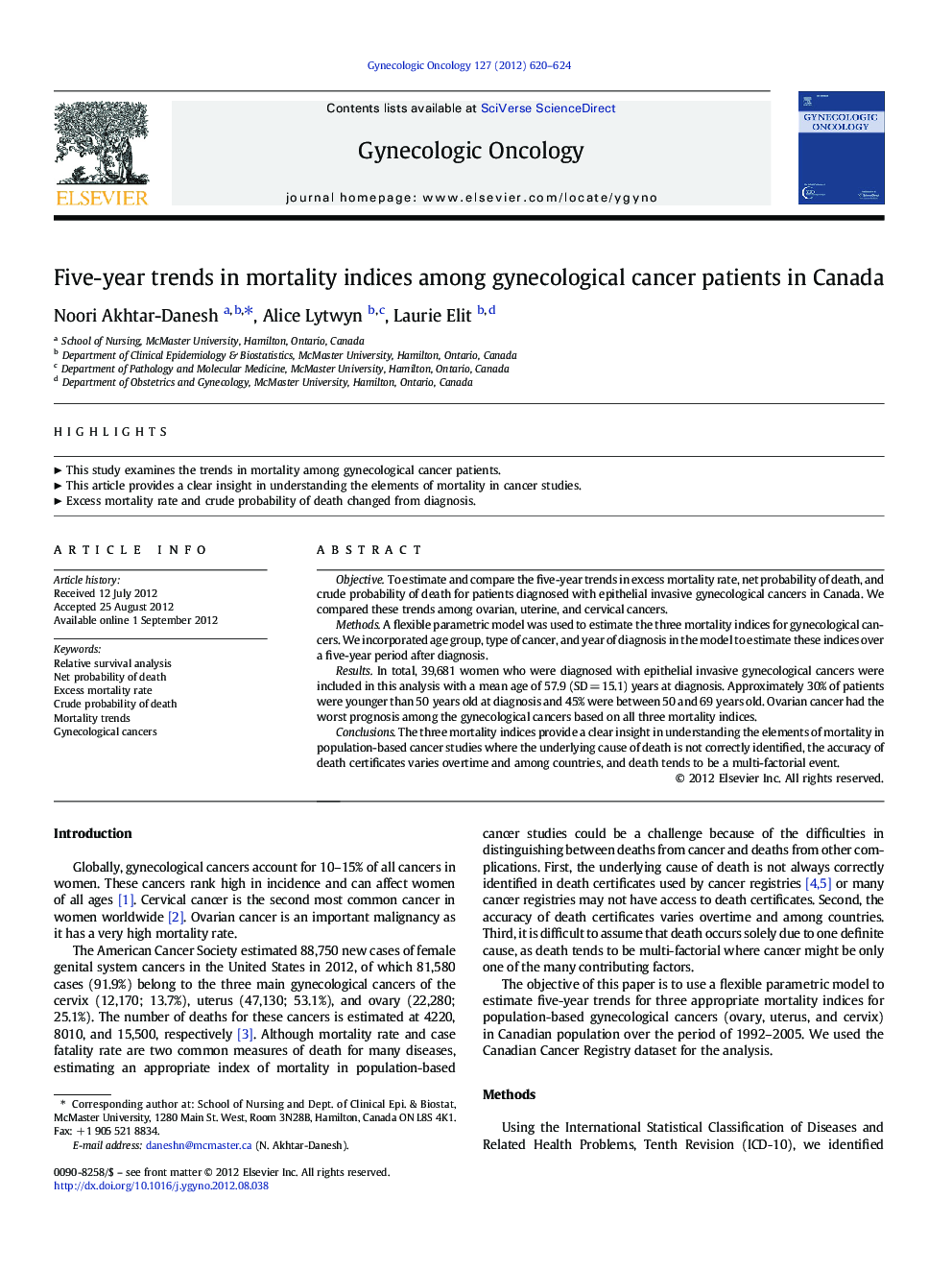| Article ID | Journal | Published Year | Pages | File Type |
|---|---|---|---|---|
| 6184655 | Gynecologic Oncology | 2012 | 5 Pages |
ObjectiveTo estimate and compare the five-year trends in excess mortality rate, net probability of death, and crude probability of death for patients diagnosed with epithelial invasive gynecological cancers in Canada. We compared these trends among ovarian, uterine, and cervical cancers.MethodsA flexible parametric model was used to estimate the three mortality indices for gynecological cancers. We incorporated age group, type of cancer, and year of diagnosis in the model to estimate these indices over a five-year period after diagnosis.ResultsIn total, 39,681 women who were diagnosed with epithelial invasive gynecological cancers were included in this analysis with a mean age of 57.9 (SDÂ =Â 15.1) years at diagnosis. Approximately 30% of patients were younger than 50Â years old at diagnosis and 45% were between 50 and 69Â years old. Ovarian cancer had the worst prognosis among the gynecological cancers based on all three mortality indices.ConclusionsThe three mortality indices provide a clear insight in understanding the elements of mortality in population-based cancer studies where the underlying cause of death is not correctly identified, the accuracy of death certificates varies overtime and among countries, and death tends to be a multi-factorial event.
⺠This study examines the trends in mortality among gynecological cancer patients. ⺠This article provides a clear insight in understanding the elements of mortality in cancer studies. ⺠Excess mortality rate and crude probability of death changed from diagnosis.
